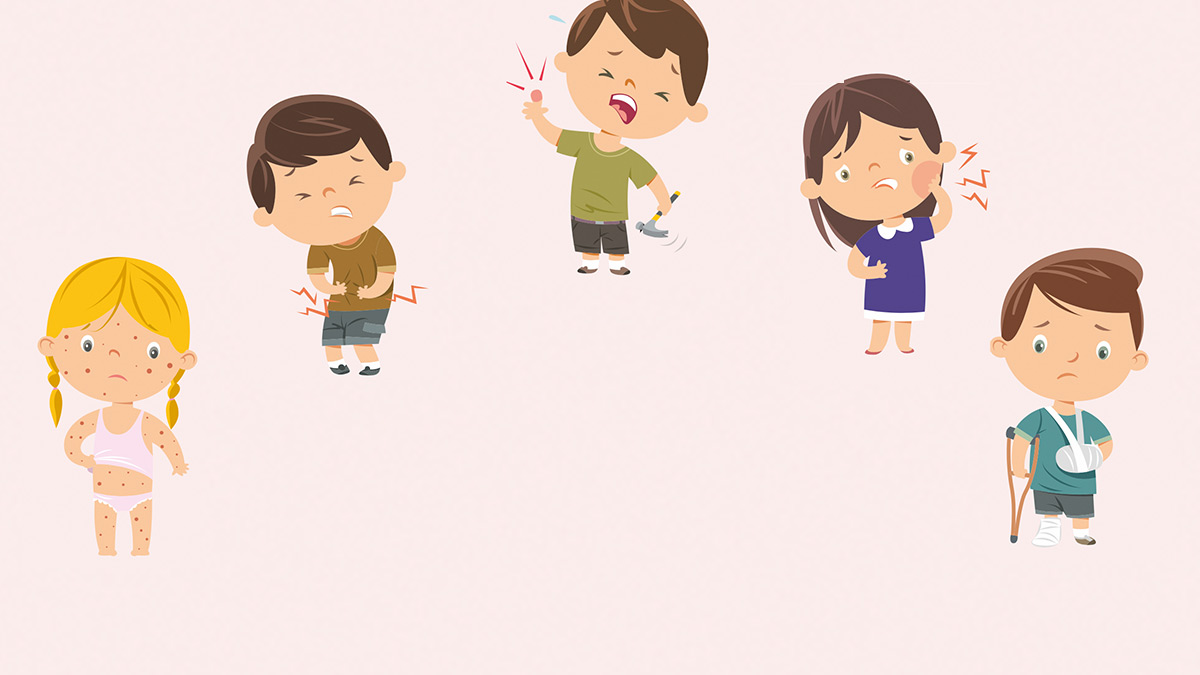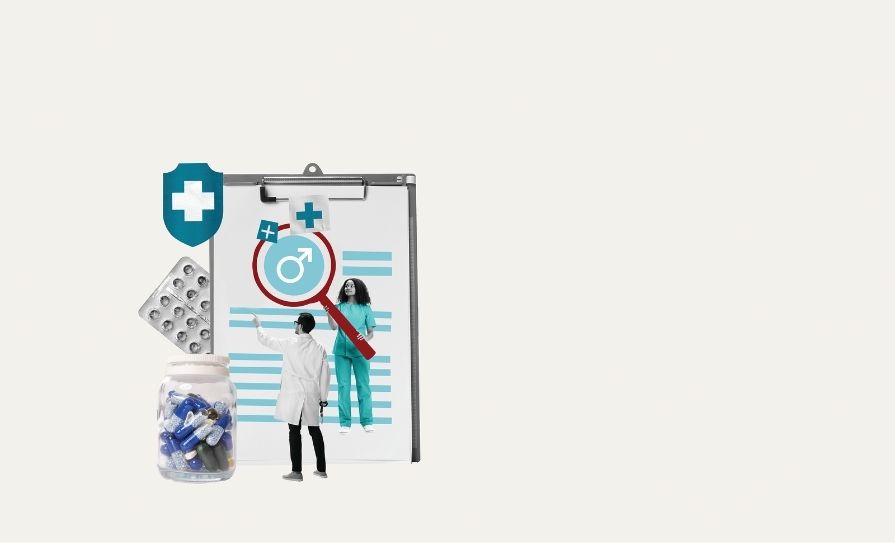Pain is an unpleasant sensory and emotional experience associated with potential or actual damage to tissue. It is subjective and individual to each person. It can be difficult to define what age is the cut-off point for paediatrics, with disagreement between many health services and organisations. In the Health Service Executive (HSE), there is agreement that 16 is the cut-off age for admission to paediatric services. Pain is one of the most underdiagnosed and undertreated medical issues in the paediatric population. Up to 40 per cent of children complain of pain at least once per week, with an estimated 15-20 per cent of children affected by chronic pain.
Chronic pain is more prevalent in the female paediatric population than the male population. Muscle, bone or joint pain, headaches, and abdominal pain can form a range of chronic conditions that require pain management. If chronic pain is left untreated, it can affect children in emotional and psychological ways that can cause issues later in life. In addition to this, untreated chronic pain in childhood can lead to chronic pain in adulthood. Despite this, paediatric pain is poorly assessed and managed, which can lead to adverse patient outcomes and increased healthcare expenditure.
Children are at a high risk of adverse drug reactions from analgesic therapy if proper precautions and monitoring are not in place. Analgesics and anaesthetics are the cause for the majority of adverse drug effects in hospitalised children. The designation of pain as the fifth vital sign is an attempt to improve analgesic therapy.
Pharmacokinetics in the paediatric population
The pharmacokinetics of many analgesic drugs can vary widely in children compared to adults. The phrase ‘children are not small adults’ has been around for many years and holds some truth. The pharmacokinetic processes of absorption, distribution, metabolism and excretion can be very different in children compared to adults. Children undergo a large amount of growth and development during childhood that can alter the pharmacokinetics of many drugs, which means a paediatric dose can’t always be extrapolated from an adult dose.
Failing to take the pharmacokinetics of many drugs into account can lead to suboptimal dosing, adverse drug effects or toxicity. A proper understanding of the differences in absorption, distribution, metabolism, and elimination is important to ensure effective analgesic therapy in the paediatric population.
Assessment of pain
There are many unique issues in the assessment of pain in the paediatric patient population. The underutilisation of evaluation tools can often lead to inadequate assessment of pain. Establishing the nature and severity of the pain provides valuable information to implement an optimal pain management approach tailored to the individual. The main goals of pain assessment in paediatric patients includes the identification of the aetiology of the pain, determination of the severity, duration, and aggravating and alleviating factors of the pain, and evaluation of the response to treatment. It is necessary to employ an assessment tool that is appropriate for the patient’s age.
There are two types of assessment tools that are commonly used: self-reporting and observational-behavioural scales, in individuals who can’t self-report. The dependability of pain assessment tools increases with age and the child’s cognitive ability. The main examples of commonly used observational-behavioural scales include the FLACC (Face, Legs, Activity, Cry, Consolability), Neonatal Infant Pain Scale (NIPS) and CRIES (C-crying, R-requires increased oxygen, I-increased vital signs, E-expression, S-sleeplessness). Self-reporting measures are depending on the child’s ability to measure and describe the location and degree of the pain. The Faces Pain Scale-Revised (FPS-R) and numerical self-rating scales (0-10) can be used in suitable patients.
Warning signs
A community pharmacy is frequently the first port of call to seek pain management information due to their accessibility and the expertise that pharmacists offer. Therefore, a child’s caregiver will often present in a community pharmacy due to paediatric pain. Pharmacists play an important role in paediatric pain management using OTC (over the counter) treatment options, undergoing medication reviews, and offering advice. Additionally, pharmacists can screen patients for warning signs and refer to other services if necessary. Some of the warning symptoms that may accompany pain and require referral include:
Less responsive than usual;
- Convulsions;
- Unusual cry;
- Severe pain;
- Usually high or low temperature;
- Unusual rash or skin colour;
- Blood in the urine or stool;
- Vomiting and diarrhoea;
- Breathing difficulties.
The Paediatric Early Warning System (PEWS) was developed to provide a framework for care in paediatrics and allows identification of children with signs of deterioration. It allows clinical concerns to be addressed in a timely manner and makes hospital admissions safer for the paediatric population leading to better patient outcomes.
Formulation
There are various factors to be considered when choosing a dosage formulation for the paediatric population. Formulations for the paediatric need to be appropriate in terms of dose, acceptability, and convenience to ensure compliance. The oral route of administration is the preferred route due to convenience and stability. Oral formulations can include liquid dosage forms (suspensions, solutions, syrups, and emulsions) and solid dosage forms (tablets, capsules, chewable tablets, and orodispersible tablets). The main drawbacks associated with the oral route include an unpleasant taste and risk of choking.
Rectal preparations can be utilised to provide both local and systemic pain relief in children and can be delivered as suppositories, enemas, creams, ointments, or foams. The rectal route of administration is useful in cases where the child has difficulty swallowing oral medication or in cases where the patient has nausea and vomiting which may affect oral drug absorption. The intravenous route can be useful in pain management in a hospital setting as it allows a rapid onset of action, although the use of needles is associated with pain and fear in children. There are also examples of the topical and transdermal route of administration being used for analgesics. Fentanyl can be delivered intranasally for the treatment of pain in paediatrics in an emergency setting, while opioids can also be effectively delivered via the transdermal route of administration. Certain analgesics can also be delivered intraocularly to reduce pain and inflammation, while lowering the risk of systemic side effects.
Treatment
The World Health Organisation has guidelines for the management of chronic pain in paediatrics. The guidelines outline the importance of physical, psychological and pharmacological interventions for pain management in children aged 0 to 19 years. The guidelines emphasise that pain is a complex issue and is a result of biological, psychological, and social factors. Therefore, pain management in paediatrics requires a multifaceted and interdisciplinary approach. There are many pharmacological and non-pharmacological treatment options available for pain management in paediatrics and these are outlined below.
Pharmacological treatment
Paracetamol
Paracetamol is an effective treatment option for mild-to-moderate pain. The mechanism of paracetamol is not fully understood but it is believed to involve multiple different pain pathways. The recommended dosage is 15mg/kg per dose every 4-6 hours, with a maximum of 1g per dose and 4g per day. Paracetamol has a favourable adverse effect profile when administered correctly. However, paracetamol does have a narrow therapeutic index and overdose can cause accumulation of a toxic metabolite that can result in acute liver failure or death. Malaise and skin reactions are possible adverse effects but are uncommon. Paracetamol is contraindicated in children with severe liver dysfunction. It is available OTC in tablet, liquid, chewable tablet, and suppository formulation with variable concentration, which can cause an increased risk of accidental overdose.
Non-steroidal anti-Inflammatory drugs (NSAIDS)
NSAIDs are commonly used and are effective in treating paediatric pain. They exert their mechanism of action by inhibiting cyclo-oxygenase (COX) enzymes and reducing inflammatory mediators. Naproxen and diclofenac are examples of NSAIDs that can be used to treat pain in children but must be under the supervision of a doctor and on foot of a prescription. Ibuprofen is the most commonly used NSAID in the treatment of paediatric pain and is available OTC. The recommended dose of ibuprofen in 10mg/kg per dose (maximum 600mg per dose) every 6-8 hours up to a maximum of 2.4g per day. There are a wide range of potential adverse effects and these include nausea, vomiting, gastrointestinal bleeding, diarrhoea, raised blood pressure, dizziness, and water retention. Contraindications and cautions in use of NSAIDs include allergy, moderate-to-severe dehydration, active bleeding, gastrointestinal ulcer, renal impairment, cardiac impairment and active chickenpox. Aspirin is not recommended for treatment of pain in children under 16 years due to the risk of Reye’s Syndrome. Similar to paracetamol, ibuprofen is available OTC in tablet, liquid, chewable tablet, and suppository formulation.
A number of different opioids are available to treat moderate to severe pain in the paediatric population
Combination therapy with paracetamol and ibuprofen is associated with improved pain relief, improve patient satisfaction, and fewer adverse effects. These drugs are used in the treatment of mild-to-moderate pain, they can be useful as adjuncts in the treatment of moderate-to-severe pain.
Opioids
A number of different opioids are available to treat moderate to severe pain in the paediatric population. Although opioids can be effective in treating pain, they are associated with several adverse effects including sedation, nausea, constipation, pruritis, and respiratory depression. Neonates are at particular high risk of respiratory depression due to the fact that their hepatic enzymes, renal function, and hypoxic respiratory drive are less efficient than in adults. Opioids should be used with caution, with appropriate dosing and close monitoring. They can be co-administered with paracetamol and NSAIDs, with the preparations generally reserved for breakthrough pain and administered on an as required basis. This co-administration can help control pain. Interpatient variability in metabolism of codeine by hepatic cytochrome P450 enzymes can lead to a higher risk of respiratory depression and death. As a result of this, morphine is the gold standard opioid for the treatment of paediatric pain, with other options including fentanyl, methadone, and oxycodone also available.
Dosing by body weight
Dosing regimens in the paediatric population that are based on age are often inaccurate and can lead to lack of clinical effect, adverse effects, and toxicity. Incorrect dosing of analgesics can lead to catastrophic consequences in paediatrics and therefore dose calculations should be double checked. Weight-based and surface area-based dosing regimens are relatively easy to use in most clinical situations. Children on long-term treatment may need dose adjustments as they grow and develop.
Non-pharmacological treatment
A patient-centred approach should be followed in the treatment of paediatric pain that allows the child to be an active participant in the pain management process. Non-pharmacological treatment options can be effective in reducing the pain experienced by a child and often has a favourable adverse effect profile. Additionally, these treatment options can generally be used in combination with pharmacological treatment options.
Distraction is a commonly used approach that is designed to guide the child’s attention from the painful stimuli and therefore reduce pain and anxiety. Distraction techniques are more effective when adapted to the developmental level of the child. Other interventions can include breathing exercises, non-nutritive sucking, and skin-to-skin contact. Massage therapy and physiotherapy can also be used to improve movement and strength, while also decreasing pain. In addition to this, hot and cold therapy can be used to help decrease pain and swelling. These can be safe and effective when practised by an appropriate practitioner. These can be used as monotherapy or as an adjunct to pharmacological methods.
Conclusion and role of the pharmacist
Several effective strategies can be employed to manage pain in the paediatric population, depending on the pain type, duration, and severity. Proper pain assessment and management often requires a multidisciplinary approach with both pharmacological and non-pharmacological interventions. Pharmacists possess the clinical knowledge to ensure proper use of OTC analgesics, conduct medication reviews, and individualise pain management regimens to ensure pain relief is optimised and clinical outcomes are improved. In addition to this, pharmacists can provide thorough counselling to the patient or caregiver to ensure proper use of medication, screen for potential drug interactions, monitor patient response, and collaborate with other healthcare providers to ensure the clinical response is optimised. Finally, pharmacists can refer the patient or caregiver to seek further medical care if non-prescription analgesic therapy fails or if warning signs are present.
References on request







